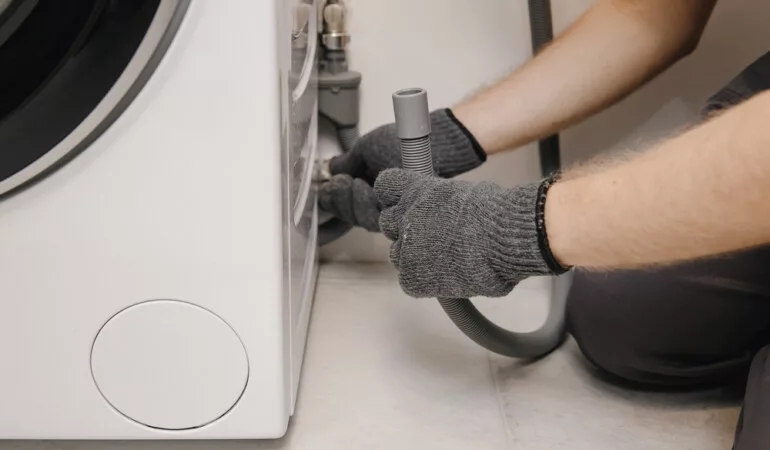To clean the rubber seal gasket of a washing machine, please follow these steps:
1. Preparation: Put on a pair of rubber gloves to protect your hands during the cleaning process. You may also need a soft cloth, a mild detergent or vinegar, and a toothbrush or soft brush.
2. Open the door: Fully open the door of your washing machine to access the rubber seal gasket. Take a moment to inspect the seal for any visible dirt, mold, or residue.
3. Wipe down the seal: Dampen a soft cloth with water and gently wipe the rubber seal to remove any loose debris or dirt. Pay close attention to the folds and crevices of the seal, as dirt tends to accumulate in those areas.
4. Prepare a cleaning solution: Create a mixture of mild detergent or vinegar and water. Dilute a small amount of detergent or add vinegar to a bowl or bucket of warm water. Stir the solution to mix it well.
5. Clean the seal: Dip the cloth into the cleaning solution and wring out any excess liquid. Use the cloth to wipe the rubber seal thoroughly, ensuring you cover all areas, including the folds and crevices. The detergent or vinegar will help break down any grime or mold on the surface.
6. Target stubborn stains: For stubborn stains or mold, use a toothbrush or soft brush dipped in the cleaning solution. Gently scrub the affected areas to lift away the stains or mold. Be careful not to scrub too vigorously, as it may damage the rubber.
7. Rinse the seal: After cleaning, rinse the rubber seal gasket with a clean, damp cloth to remove any soap residue or cleaning solution. Make sure to wipe away all traces of the cleaning solution.
8. Dry the seal: Take a dry cloth and wipe the rubber seal gasket to remove excess moisture. Leave the door of the washing machine open for some time to allow the seal to air dry completely. This helps prevent mold or mildew growth.
It’s important to note that regular cleaning and maintenance of the rubber seal gasket can help prevent mold and keep your washing machine in good condition. If you notice persistent mold or a strong mildew odor, it may be necessary to consult the manufacturer’s guidelines or contact a professional for further assistance.




